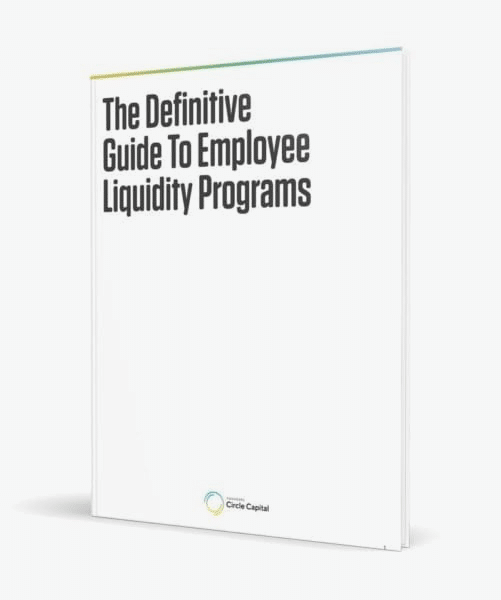Step 8
Taxation Issues Around Each Type of Stock Issuance
Different types of equity compensation at different growth points optimizes the value to employees. The following sections review the employee’s financial obligation at the time at which they either exercise, purchase, or are issued stock:
RESTRICTED STOCK
Restricted stock is typically granted to the earliest team members — founders, engineers, and advisers — often before the first round of institutional financing. It receives a favorable tax treatment. If an election under Section 83(b) is properly filed, restricted stock that is subject to vesting will be taxed at the time such stock is granted rather than at the time of each vesting event.
As a result, the employee pays all of the tax upfront rather than paying tax each year as the stock vests (and as the company’s value increases). The amount is based on the value of the stock at the time of grant, which is typically just single-digit pennies per share. If such an election is made, it must be filed within 30 days, as there is no relief for late filings.
INCENTIVE STOCK OPTIONS (ISOS)
ISOs tend to be granted to employees in a startup’s early days, typically after the first round of institutional financing. Generally, companies are only allowed to issue up to $100,000 in ISO value per employee per year. Compared to other types of options, ISOs have flexible characteristics, favorable tax treatment, and allow time for financial planning.
ISOs are taxed upon exercise by the employee. Employees tend to exercise their ISOs when they have a meaningful number of vested shares, have the money to pay the associated costs, see that the preferred price is meaningfully higher than the 409A price, and are bullish on the company’s long-term prospects. Note that the exercise of ISOs is not taxed for ordinary income tax purposes; however, the “spread” (i.e., the difference between the 409A value of a share and the strike price for such share) is taxable for alternative minimum tax (AMT) purposes.
The exercise of an ISO is also not subject to employment tax withholding; the tax obligation falls entirely on the employee. When an employee exercises their ISOs for vested shares, their financial obligation is comprised of both the exercise cost (= #shares x strike price) plus the taxes associated with the exercise of the ISO (= 409A value – strike price x AMT rate). The earlier an employee exercises their ISOs, the lower their overall financial obligation, as the value of the company generally increases over time.
NONQUALIFIED STOCK OPTIONS (NSOS)
NSOs tend to be granted to employees somewhat later in a company’s life. Unlike ISOs, companies are not restricted in the value of NSOs it can grant to an employee. Like ISOs, NSOs are taxed at the time they are exercised by the employee. However, unlike ISOs, income from the exercise of an NSO is taxed as ordinary income, and the company is obligated to withhold employment tax in respect of the exercise.
Employees tend to exercise NSOs in one of two scenarios: either very early (i.e., when there is little difference between the 409A price and the strike price) or very late (i.e., at the time of an IPO or M&A exit, at which time they turn around and sell their shares on the open market). When an employee purchases their vested NSOs, their financial obligation is comprised of both the exercise cost (= #shares x strike price) plus the tax cost (= 409A value – strike price x ordinary income rate).
RESTRICTED STOCK UNITS (RSUS)
RSUs tend to be granted to employees once a company’s growth in valuation has stabilized. Unlike ISOs, companies are not restricted in the amount of RSUs it can grant to an employee. RSUs have little inherent flexibility because, upon vesting, the company converts their promise of stock compensation to an employee into the actual issuance of a specified number of shares of stock that the employee then owns outright. RSUs are generally taxed upon receipt of the stock (typically along a four year vesting period). The employee’s financial obligation, at the time of receipt, is the tax cost (= #of shares x value at issuance x ordinary income rate).
The above describes an employee’s financial obligation at the time at which they either exercise, purchase, or are issued stock and assume outright ownership. There is another taxable event, which occurs at the time the employee sells their shares and receives cash proceeds. They can either sell within one year or hold for more than a year before selling. This is true whether an employee is selling in an employee liquidity program or in the public market.
TAXABLE EVENTS – SELLING OF SHARES AND CASH PROCEEDS –
Within one year
The employee will be taxed at the ordinary income tax rate (= #of shares x sale price – purchase/issuance price x ordinary income rate). If they sell their stock immediately upon purchase/issuance, then the tax obligation is often non-existent. However, for a “high-flying stock,” if the employee sells nine months after purchase/issuance and the stock has appreciated considerably, the tax bill could be meaningful.
After one year
The employee will be taxed at the long-term capital gains tax rate (= #of shares x sale price – purchase/issuance price x long-term capital gains rate). If the stock price remains relatively flat between the date of purchase/issuance and the date it is sold, then the tax obligation is often minimal. However, for a “high-flying stock,” it will be considerably less than if the employee sold within one year even though there will be a tax obligation.
OTHER TAX CONSIDERATIONS –
Companies must also consider the following high-level questions on behalf of employees regarding taxes:
Is the company properly accounting for the exercise and sale of options on its books?
Shareholder knowledge is important. The company must have people in place who can handle potential issues and help employees understand the tax implications of what they have been issued.
Could a participant sell at a price above the 409A value?
If so, how are amounts above the 409A value treated for tax purposes? If an employee sells stock at a price that exceeds the value of the common stock or the 409A valuation, the corresponding gains could be considered compensation income or capital gains — a point of contention among auditors and attorneys. Because these differences are potentially material, companies and shareholders should have a common understanding of how these gains are handled.
Would this participant qualify for QSBS (qualified small business stock) benefits?
Is the shareholder fully aware of the related rules and qualifications? If someone acquires stock options as an early employee in a startup and holds them for five or more years, the employee could potentially exclude up to $10 million in capital gains through QSBS benefits. This is the biggest tax opportunity that someone could have at a small company.
If this participant can sell a specific amount of shares through the program, would it be existing shares or unexercised options?
What are the tax implications of each type of sale? In considering participation in a liquidity program, employees want to incur the lowest tax liability possible. In some cases, a participant might face lower taxes by selling unexercised options; in others, the participant might need to hold off for five years to take advantage of QSBS benefits. They should be aware of the consequences of their choices.
Does the participant understand the rules for estimated tax payments for federal and state purposes?
When participating in a liquidity program, employees need to understand when they owe the taxes that correspond with the sales. Depending on when the sales are enacted and whether a participant is required to pay estimated taxes, the participant might be able to hold off on paying tax until the next tax cycle.
If a participant is ever audited, would he or she have the necessary documentation associated with the employee liquidity program, including stock certificates and purchase agreements?
In order for someone to sell stock, they first have to acquire the stock, either through purchase or gift. If a participant is audited, he or she will need documentation to support the timing, pricing, and terms of each purchase and sale transaction.







